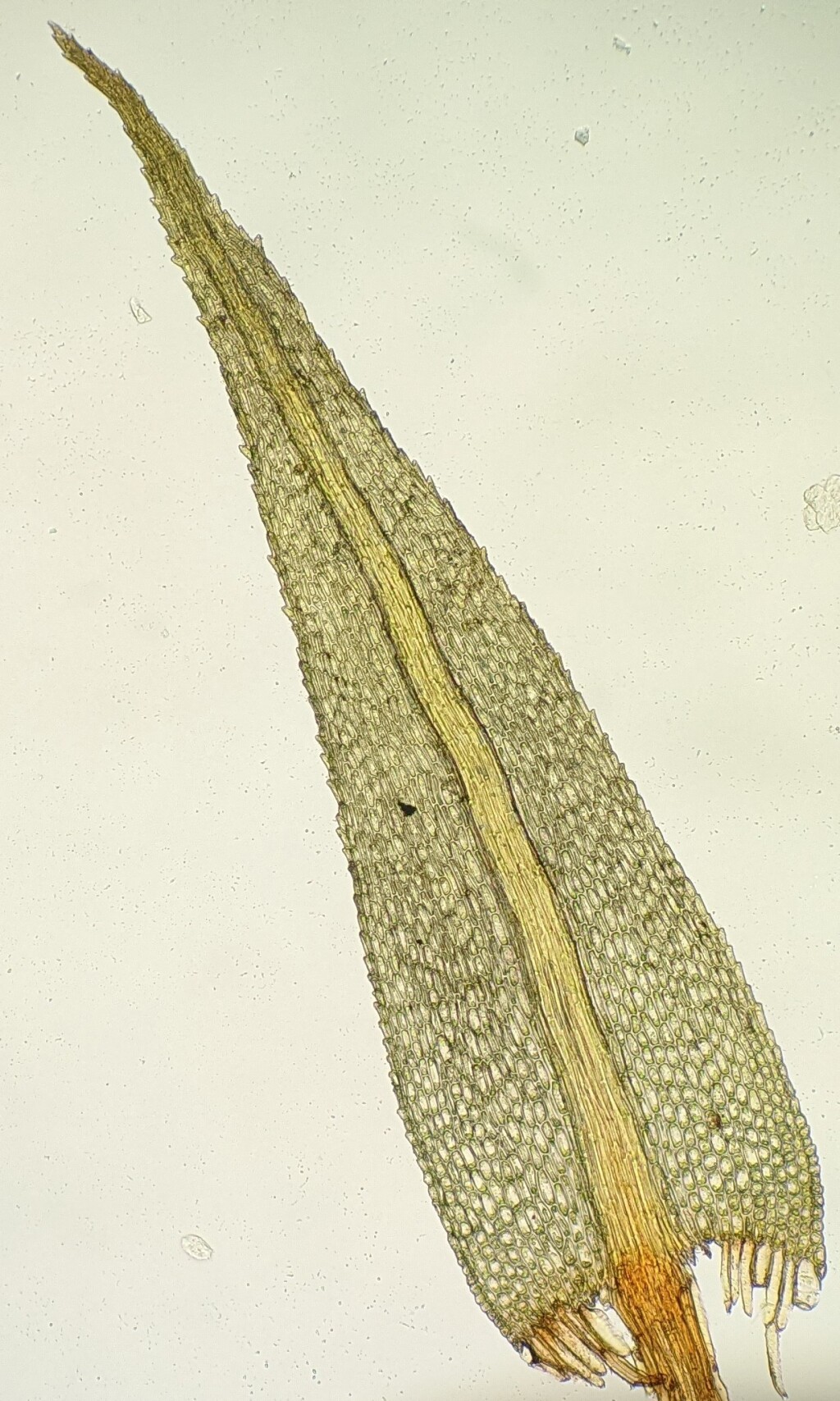Philonotis
Dioicous or rarely synoicous (not in Victoria) or autoicous (not in Victoria). Asexual reproduction by small caducous brood branchlets in leaf axils toward stem apex (not in Victoria). Tufts on soil and rock. Stems erect, ascendant or creeping, simple, sparingly branched, branching by innovation below the sporophyte or occasionally with a basal unbranched section leading to a pinnately or bipinnately branched section, tomentose near base, sometimes patchily so. Leaves triangular or ovate to linear-lanceolate or linear, imbricate to widely spread on stems, erect to squarrose when moist, sometimes falcate-secund, rarely slightly twisted, scarcely altered or becoming more erect or appressed (not in Victoria) when dry, not ranked or rarely in 5 ranks (not in Victoria), not plicate, without a sheathing base; apex acute to acuminate or rarely obtuse (not in Victoria); costa subpercurrent, percurrent or percurrent; margin entire or denticulate to serrate with single or double teeth, plane or recurved; laminal cells subquadrate, elongate-hexagonal, rectangular or linear, usually longer and narrower at apex, unistratose, often becoming translucent toward base (not in Victoria), either gradually or abruptly equidistantly from base between margin and costa or translucent region extending highest along costa, sometimes translucent throughout or confined to alar regions, smooth throughout or prorate in non-translucent zones, with papillae or mamillae either at basal or apical end, or at both ends (not in Victoria) and at the apical end adaxially and at the basal end abaxially, or papillae single and central on both surfaces or adaxially only (not in Victoria); alar cells differentiated and subquadrate or not. Capsules erect to pendent, symmetric or asymmetric, globose to broadly ovoid or obloid when moist, cylindric and striate, rugose or rarely smooth (not in Victoria) when dry, without an annulus. Operculum convex, with or without an umbo. Peristome absent, single (not in Victoria) or double; exostome when present free apically; endostome when present similar length as exostome, with a high basal membrane; cilia well-developed (not in Victoria), rudimentary or absent.
Around 170 species, widespread throughout the world, but absent from Antarctica; five species in Victoria.
 Spinning
Spinning


